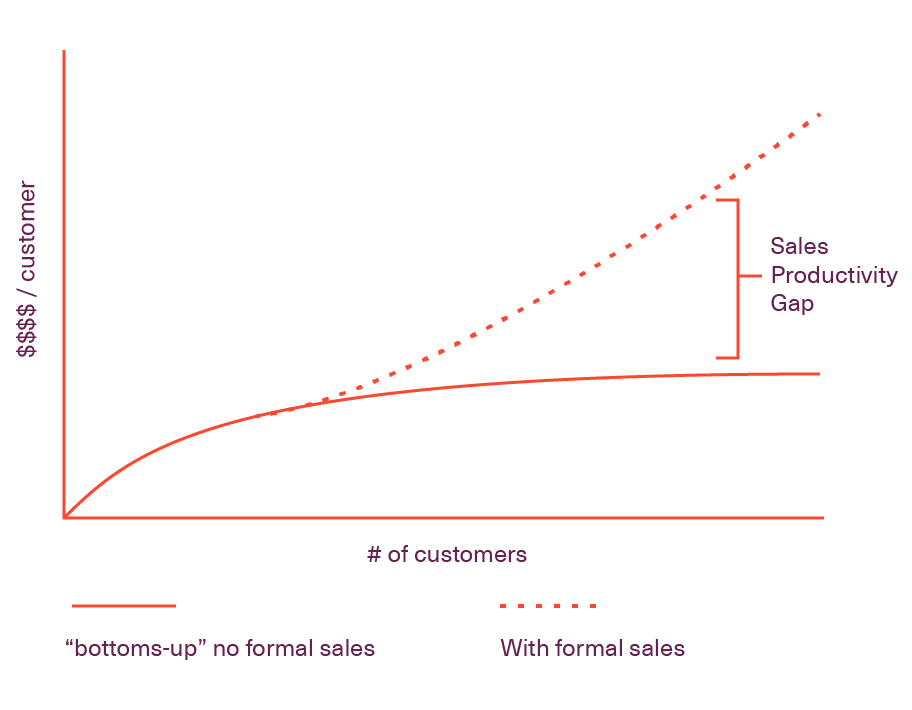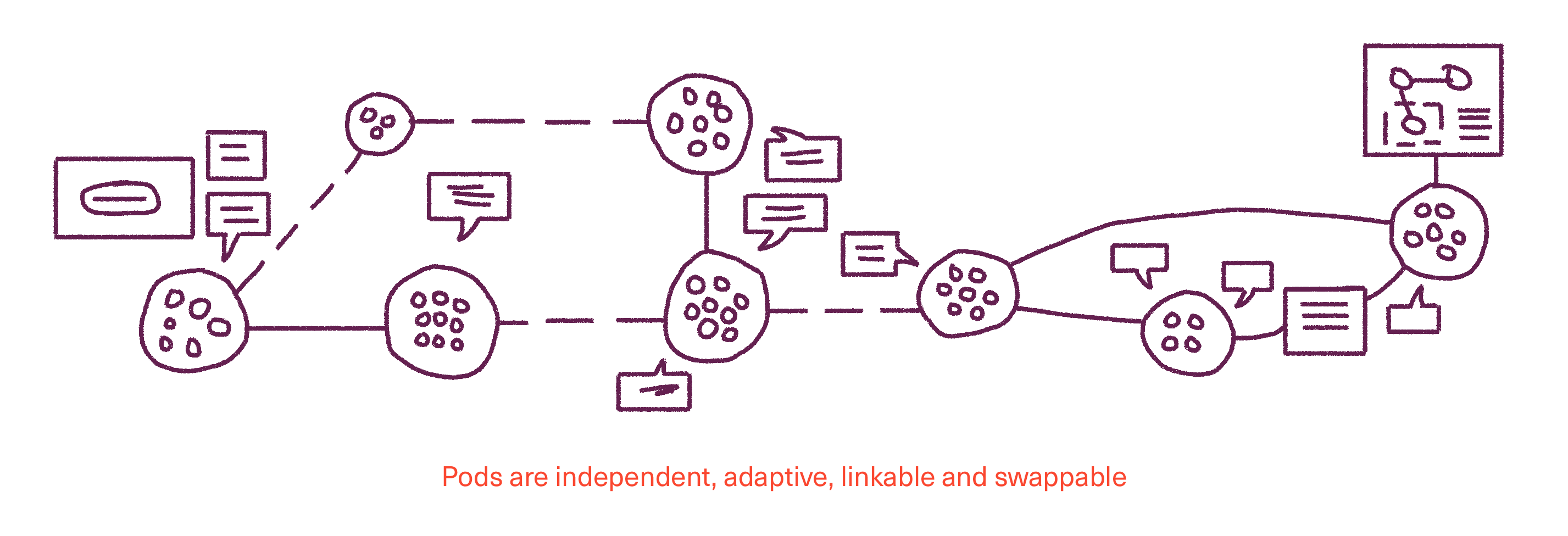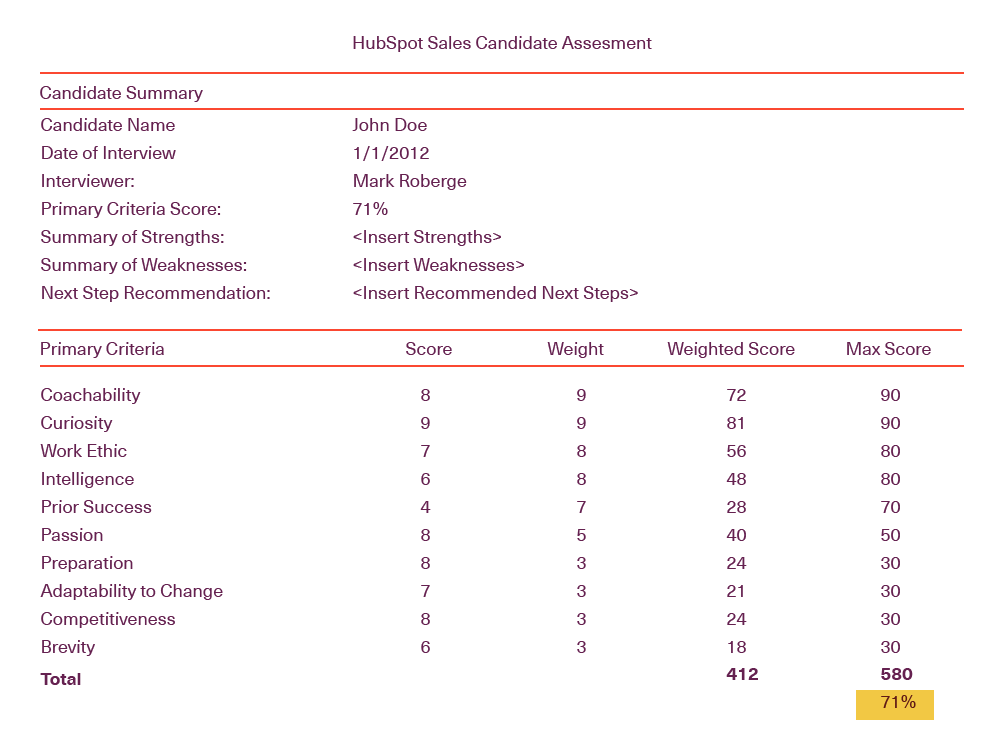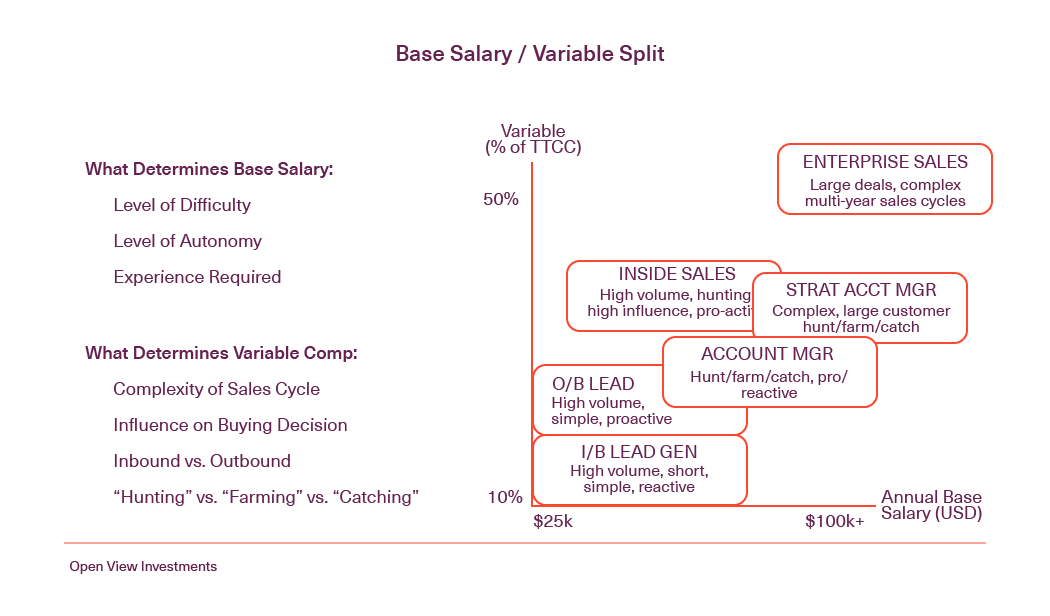
How to build, manage and scale a sales team – 12 strategies from the experts
Main illustration: Joshuah Miranda
Growing a sales team isn’t as simple as putting a bunch of A players in a room and getting them to start selling your product. Sure, you might get a few more deals across the finish line and maybe even score a lighthouse logo. But this approach rarely succeeds in today’s environment.
If you want to build a revenue engine that will fuel long-term growth, you need to build and scale your sales org with intention. Only then will you have the foundation to consistently win new customers, upsell existing ones and see the kind of predictable growth that’ll be the making of your company.
An efficient and profitable sales org is the product of many strategic decisions – who you’ll hire, what you’ll pay them, how you’ll onboard and train them, and much more. When done right, your sales team won’t just accelerate your company’s growth; they’ll enrich your company’s culture and help build a better product too.
So we asked a few top practitioners from companies such as Shopify, Terminus, Close and many more to talk about how they’ve built sales teams from the ground up. Taken together, their advice is a blueprint for how to build a modern sales team.
12 expert tips to build a world-class sales team
1. Decide on top-down vs. bottom-up
Peter Levine, General Partner, Andreessen Horowitz
I’m often asked the question of “Why sales?” by entrepreneurs and technical founders.
The “Why sales?” question becomes even more pressing given the trend toward “bottom-up” product adoption – i.e., offering a given product for free or without a formal top-down sales motion, as is common with SaaS. Why not simply invest in hiring more engineers and let the targeted end-user virally adopt the product of their choice?
“A formal sales function promotes the value of a product to an organization in ways that individual adoption and usage can’t”
The answer is that unstructured, bottom-up, user-generated sales do not unlock the full value of a given product. If you build it, they may come … but they probably won’t discover – or take advantage of – every feature you want them to. Most users view a product only through the lens of their own use, not through the needs and habits of all the users in their enterprise (which is a view someone at the top, such as a Chief Information Officer, is more likely to have). For example, a security or audit feature that is crucial to a CIO might be completely irrelevant to an individual user.
A formal sales function promotes the value of a product to an organization in ways that individual adoption and usage can’t. Sales people can demonstrate the importance of features across the board, including criteria-setting, pricing, and packaging that unlocks more of the value the product is materially creating for an organization. The result is greater penetration into the enterprise, higher product appreciation, and more revenue from a given customer.
This is not to say that bottom-up adoption is bad strategy; quite the opposite. Many great products see exciting initial revenue traction. The number of customers increases, and the dollars per customer correspondingly grow. However, as a product achieves broader adoption, the dollar per customer tends to flatten. This reflects an individual user’s ascribing a fixed value to a given product:

That’s why combining a top-down and bottom-up approach by layering a formal sales function yields the best results. Although a sales organization might seem too expensive, the revenue it will add can far exceed the cost (you want your sales organization to generate 3x its loaded cost). Creating a formal sales organization will help accelerate revenue and product adoption, as well as result in more satisfied customers.
Excerpt from “Hire a Head of Sales.”
2. Find your optimal structure
Jason Lemkin, CEO, Saastr
The optimal sales team structure is one that is accretive, where, roughly speaking, each sales rep brings in at least 5x his or her total compensation.
If the average sales rep produces more than 5x the comp she takes home, then:
- An SaaS company should be able to be cash-flow positive, at least by a few million in annual recurring revenue (ARR);
- You should be able to hire as many reps as you can find;
- Sales will not be a stress center from a cash perspective;
- Marketing costs can be managed;
- Sales Development Representatives (SDRs), specialization, and account management can all be funded; and
it all “works”.
The sales-driven SaaS companies that are very capital-efficient generally end up at 5x or greater as a ratio of average quota attainment / average on-target earnings.
“Sales doesn’t need to be a cost center. It can be, and for at least most of the life of your company should be, a profit center”
Where you burn a ton of cash is “buying” sales. Shoving sales representatives into segments where you don’t have enough leads or enough demand. “Starving” reps with too few opportunities. Brutal head-to-head competition in areas you might not otherwise compete.
Buying sales isn’t bad. It works. If you can raise a ton of capital, it’s one strategy for winning and crushing the competition. But whatever you do, make sure you know the game you are playing.
Sales doesn’t need to be a cost center. It can be, and for at least most of the life of your company should be, a profit center.
Excerpt from “What is the optimal structure of a startup SaaS B2B sales team?”
3. Structure your sales organization for maximum efficiency
Steli Efti, CEO, Close
A pod model for your sales team creates focused tight-knit groups, or “pods” that comprise team members playing different roles. A pod-based organization is customer centric.
For example, a six-person sales pod would be composed of three SDRs, two AEs, and one customer success rep. Rather than having large teams, you create little pods of specialized roles, and each pod is responsible for the entire journey of specific customers.
Dave Gray, author of The Connected Company, provides this diagram of the pod model:
You still utilize the specialist roles of SDRs, AEs, and customer success reps. But instead of having all of your SDRs or AEs compete against one another, pods compete with other pods. Each pod works together to win the customer, and keep the customer happy afterward. They’re more fluid, and come up with ideas independently.
Pods are more modular and flexible than traditional sales teams. Because success is measured by pod, each member of the sales force has a larger, more holistic view of the entire company. Pods build more meaningful connections between people who are working together. It’s perfect for mature startups trying to optimize existing sales resources to tap into new markets and verticals.
If you’ve established your market and have significant traction, organizing your teams into pods creates a highly flexible, agile salesforce that’s ready to meet a variety of challenges and pounce on new opportunities.
Excerpt from “3 models of effective sales team organization.”
4. Use the sales acceleration formula to build your sales team
Tomasz Tunguz, Managing Director, Redpoint Ventures
If you want to understand how to build a great SaaS sales organization, you should read Mark Roberge’s The Sales Acceleration Formula. It’s the single best book on the topic.
Mark is the Chief Revenue Officer at Hubspot, a company that has created tremendous success by perfecting the inbound marketing plus sales model. The book is invaluable for every founder, CEO and sales manager because it not only explains how the Hubspot sales team is structured, but why the structure came to be.
The first employee at Hubspot and tasked with building the sales team, Mark developed a structured interview to qualify candidates and correlated the attributes of the best sales candidates. His list surprised me: Is are the five characteristics of people most likely to succeed in Hubspot’s sales teams.

With this knowledge in hand, Mark created a quantitative candidate assessment. Based on the linear regression mentioned above, the scorecard established hiring consistency and enabled the team to grow predictably.
Excerpt from “The Best Book on Building a SaaS Sales Team.”
5. Create a sales culture that’s about more than quota
LB Harvey, VP of Sales, Intercom
In sports, stacking your team with all-star players doesn’t always lead to a championship. Similarly in sales, hiring prima donna sales people rarely leads to a great sales quarter. Successful sales people care deeply about reaching and exceeding their own personal quota goals, but they care about the company too. How can you tell?
- They go out of their way to deliver customer feedback to product teams.
- They’re dedicated to protecting your non-negotiables.
- They’re fired up to help the team create best practices and scalable processes.
- They raise up fellow sales people along the way and instinctively understand that the whole is greater than the sum of the parts.
While it’s hard to directly attribute those things to helping hit quota goals, they’ll lead to a better customer experience and a better product – which, ultimately, are easier to sell. It’s a win-win.
Excerpt from “Hiring for sales in a product-led world.”
6. Look for sales people who are passionate
John Barrows, Sales Trainer
Passion is the one thing you cannot train. I worked with Jack Welch of GE for a couple of months to get his online MBA program off the ground, and when I started my first company way back in the day, Jack came to Boston to do one of his conferences. At that time, my company had 50 employees.
I stood up and I said, “Jack, look. You talk a lot about passion and all this other stuff. When we were five people starting this company, we were all super passionate. Everybody was on the same page. We got to 20 people and everybody was still super passionate. Now at about the 51st person we’re bringing in, it just doesn’t seem that they have the same passion that we do for the business. How do you instill your passion on somebody else?” In front of 1,000 people, he basically told me I was an idiot. He said, “You’re looking at it all wrong. You can’t instill your passion in somebody else. You have to hire passion.”
“I can teach skill, I can teach technique, I can teach product knowledge, but I can’t teach drive. I can’t teach passion. I can’t teach grit.”
That flipped my hiring persona upside down. I can teach skill, I can teach technique, I can teach product knowledge – I can teach all that stuff to somebody who’s willing to learn, but I can’t teach drive. I can’t teach passion. I can’t teach grit. Sales is a brutal profession. You literally get told “no” 99 times, and you have to keep coming back and asking for more so you can get that one “yes” in 100. That’s why one of my favorite interview questions is, “What are you passionate about?” I don’t care what you’re passionate about; I care how you describe what you’re passionate about.
For instance, if I asked you that question, you could say, “I really like customers and I really want to do right by them and make sure our product’s a good fit.” Or you could say, “Holy crap. Did you see what happened on Thursday night with the Patriots? They got absolutely smoked. I’m rip roaring pissed-off, but I think it’s a good thing, because you know what? They needed to get knocked down a notch. I still think they’re going 17–1 this year!” I don’t care if football has nothing to do with what you and I were talking about; if you describe it in a passionate way, that means you have some sort of fire in you. My job as a leader is to take that passion and connect it to my business so that you can bring a fraction of that to the table when you come work for me.
John Barrows, as heard on the Inside Intercom podcast.
7. Hire sales people who can blend art and science
Stan Massueras, Director of EMEA Sales, Intercom
What it means to be a good salesperson is changing all the time. Ten years ago, being a good salesperson was treated as an art. You had to influence and persuade and be extremely well-spoken. Over the past five years, sales has become more and more about science. It’s all about looking at data and predicting buyer behaviors and patterns.
I think right now a successful salesperson is someone who can do both. Someone who is very articulate, who can create content, can command an audience but who also has a fundamental understanding of modern communication tools like SalesLoft and Intercom. Even though more and more the sales process happens online, and more of the buying process happens before a salesperson is engaged, complex deals still don’t happen without people getting involved – managing the relationships, navigating the buyer’s ecosystem and successfully merging decision makers’ objectives with desired outcomes (not to mention individual career aspirations, personalities, personal ambitions and so forth).
8. Choose a compensation model – salary or bonus-heavy compensation?
Devon McDonald, Partner, OpenView Venture Partners
The short answer to that question is that at the expansion stage, the more you can leverage compensation for results, the better off you (and your sales team) will be in the long term.
Commission or bonus-focused compensation plans provide tremendous upside for growth and allow CEOs to truly leverage their people – all while those people are given ample opportunity to make significantly more money than if their income was largely dictated by a fixed salary figure.
“The idea is to create an environment that rewards urgency and provides upside for over-performers”
Simply put, if your compensation plan is largely tied to your sales organization’s ability to achieve specific objectives and targets, then everyone will be incentivized to perform the kinds of revenue-driving activities that yield those results. The value that you place on certain performance measures will vary, but the idea is to create an environment that rewards urgency and provides upside for over-performers.
Ultimately, that model won’t just help you appeal to (and retain) A-level sales talent, it will also make it easier to scale because your up-front investment in additional sales headcount will be less expensive.
Excerpt from “Creating a scalable sales compensation plan.”
9. Align compensation to how your buyer buys
Elizabeth Cain, Partner, OpenView Venture Partners
This is my #1 rule in sales compensation. If you don’t take anything else away from this article, take the time to inspect your data and understand the natural buying process of your customer. Do your most successful customers start with a point of contact, land and expand, and add modules/users/etc. over time, or do you have one shot to maximize your sale? If you do have a land and expand model, what drives that expansion – buyer, user or product? Between your data and your team you should be able to come up with a few hypotheses. From there, we recommend talking to your customers and lost prospects to validate.
If the most natural path to a successful customer is to land with one area of your product and grow the account over time, you need to ensure your sales team is incentivized to do that – do not pay them less for an upsell than you would for a new sale, or tell them they can only upsell for the first 3 months after purchase if you know that will put undue pressure on the buyer. You have to consider the customer experience when writing your sales incentive plan.
Excerpt from “Designing Effective Sales Comp Plans: The Dos and Don’ts for Every Sales Leader.”
10. Determine the base salary / variable split
Michael Hanna, Revenue Ops Lead, Shopify
I recommend that you begin laying out your compensation plans by ironing out the base salary and variable compensation for each role.
First, determine the role’s base salary by assessing the following:
- Level of difficulty,
- Level of autonomy (how much are they out on their own?), and
- Experience required.
The higher for each, the greater the base salary will typically be.
Next, determine the variable comp based on your answers to the following questions:
- How complex is your sales cycle?
- How much influence do reps have on the buying decision?
- Is your model primarily inbound or outbound?
- Is the focus of the role primarily hunting (outbound), farming (growing existing business) or catching (inbound)?
Here’s an example of where certain sales roles may fit on the base salary / variable comp spectrum in the graph below:

Once you have an idea of the total target compensation for the role, you can start determining the base elements that will drive your comp model.
Excerpt from “Choosing the Best Sales Compensation Plan for Your Business.”
11. Design an onboarding process that will make sales reps stay
Tonni Bennett, VP of Sales, Terminus
When I was new to sales leadership and onboarding reps, I did a lot of classroom style training and thought that once I shared a concept, my team would be able to absorb it and put it into practice immediately. I mistakenly trained people the way that met my learning style and capability, and expected them to know the material intimately right away. But I learned that taking into account different learning styles and preferences is incredibly important in helping sales professionals to retain the information long term, and that repetition of key concepts is vital for long term retention.
“Taking into account different learning styles and preferences is incredibly important in helping sales professionals to retain the information long term”
I now try to incorporate auditory, visual and tactile elements into my team’s onboarding to meet all three learning styles, and ask new reps how they prefer to process information. Does role-play help them absorb a concept, or is sitting in a room alone reading over notes or talking out loud to the wall more effective?
Every time we onboard, we adjust parts of the onboarding based on feedback from our new hires about how they best retain information, giving them space to absorb the material and to practice in their own way. On top of that, we slowed down our onboarding program, stretching it across a longer period of time to make sure that at least the biggest topics and talk tracks are not taught once, but repeated or recapped several times.Hearing, seeing and taking action on a concept over several days improves new hires’ retention and long term understanding of the material, instead of simply facilitating regurgitation of the concept.
To further reinforce the training, our follow-up materials include a written version of a concept, a video or audio recording of a talk track by a leader, a couple of live examples from the field and then a requirement to execute a role-play or presentation of what the new hire has learned.
12. Train reps for effectiveness, not just efficiency
Richard Harris, Founder, The Harris Consulting Group
Efficiency has been the “sales du jour” topic of the month for the past 18 months. While efficiency matters and the sales stack is becoming more robust, what was thought of as nice-to-have has become a must-have (data, dialers, email, etc.) Now that we have made ourselves more efficient, people are finally realizing that efficiency is only 30% of the battle. The other 70% of the battle happens in the conversations.
This means both training and sales coaching are no longer merely something to consider, but something required.
Gone is the time when two days of features and benefits, a half day of CRM training and then a few hours of “ghosting the top rep,” (which turned into bullshit because they rarely ever got on live calls) are acceptable. In fact, if this is your sales training, just quit now. Go find a company who respects the role enough to give you guidance and support and help shorten your ramp time, and sees you as a benefit to the company, not a cost to control or manage.
Excerpt from “The Ultimate Guide to Winning Sales Conversations.”







